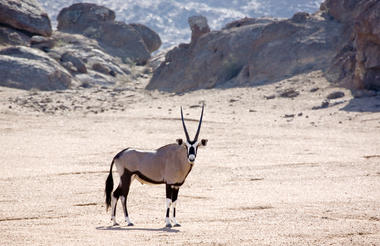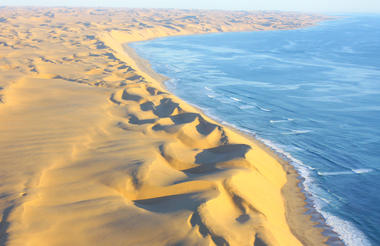With its well-developed infrastructure, some of the best tourist facilities in Africa and an impressive list of breathtaking natural wonders, touring Namibia is truly a pleasure. Visit the capital of Windhoek and the lovely coastal town of Swakopmund to discover remnants of the country’s German influence, reflected in the architecture, culture, cuisine and the annual Oktoberfest celebrations. To properly appreciate this extraordinary country, you will have to venture out of the cities to explore the remarkable natural landscapes Namibia has to offer. These include: the impressive Fish River Canyon Park; the vast Etosha National Park teeming with local subspecies, such as desert lions, desert elephants and the Hartmann's Mountain Zebra; the hauntingly beautiful Kalahari Desert; and of course the Namib Desert stretching for nearly 1000 km along the magnificent Atlantic coastline. Namibia is an ideal destination for travellers seeking an unforgettable African experience in a uniquely beautiful untamed wilderness.
With an area of 172,200 hectares spread across four distinct ecosystems, NamibRand Nature Reserve is among the largest privately owned game parks in southern Africa. Established with the aim to conserve the unique environment and wildlife species of the south-western Namib Desert, the park’s mix of dunes, mountains, rocky outcrops, sandy flats and gravel plains provides habitats for a variety of mammals – including hyenas, jackals, foxes, wildcats and antelopes – as well as countless bird species, reptiles, frogs, insects and plants.
Activities: Discover the mysterious ‘fairy circles’ on grassy plains; sip on sundowners while watching the sunset over this unspoilt ancient landscape; revel in the magnificent night sky – NamibRand is Africa’s first International Dark Sky Reserve, i.e. one of the least light-polluted areas in the world.
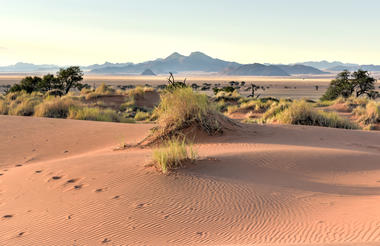
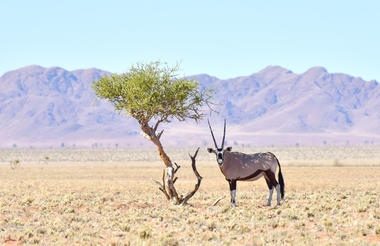
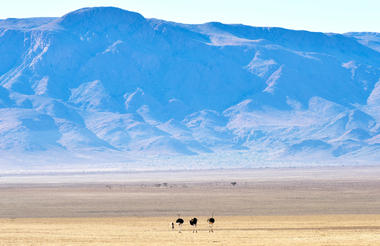
Where Kaokoland meets the Skeleton Coast, in western Namibia, the 270-kilometre-long Hoanib River is one of the last water oases in the country, providing a haven for numerous animals. Home to 75% of Namibia’s endemic species, including the largest numbers of desert-adapted, free-roaming elephants, lions, and rhinos in the world, as well as zebra, kudu, and giraffe, this is a truly exceptional and awe-inspiring place. Visitors can enjoy taking a wonderful four-wheel-drive route, going on adventurous hiking trails, running down enormous sand dunes, or climbing massive, strangely shaped rock formations as well as several guided nature walks.
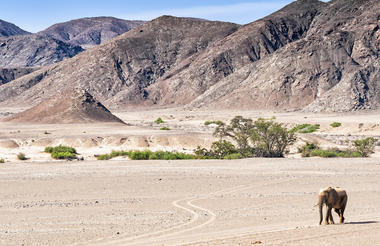
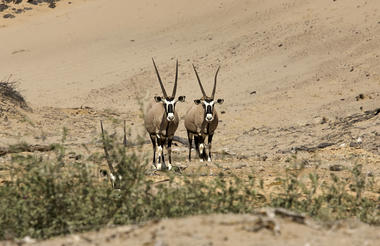
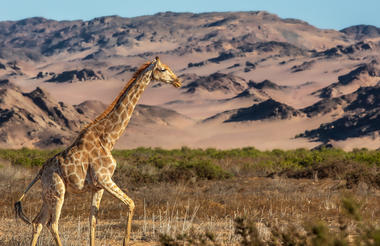
Skeleton Coast National Park extends from the dry Ugab River all the way north to the Kunene River, Namibia’s border with Angola. The inhospitable Skeleton Coast is known as the 'Land God Made in Anger'. It is desolate but breathtakingly beautiful – remoteness at its best. Fogs, caused by the cold Benguela Current, roll in from the roaring ocean and sustain an amazing array of fauna and flora that have adapted to this harsh but intriguing environment: colonies of seabirds and Cape fur seals, zebra, gemsbok, desert-adapted elephant, lion and more.
The name Skeleton Coast was coined because of whale bones washed ashore and the many ships that met their fate in these turbulent waters. The bleak desert environment along the entire coastline meant almost certain death for those who were shipwrecked.
